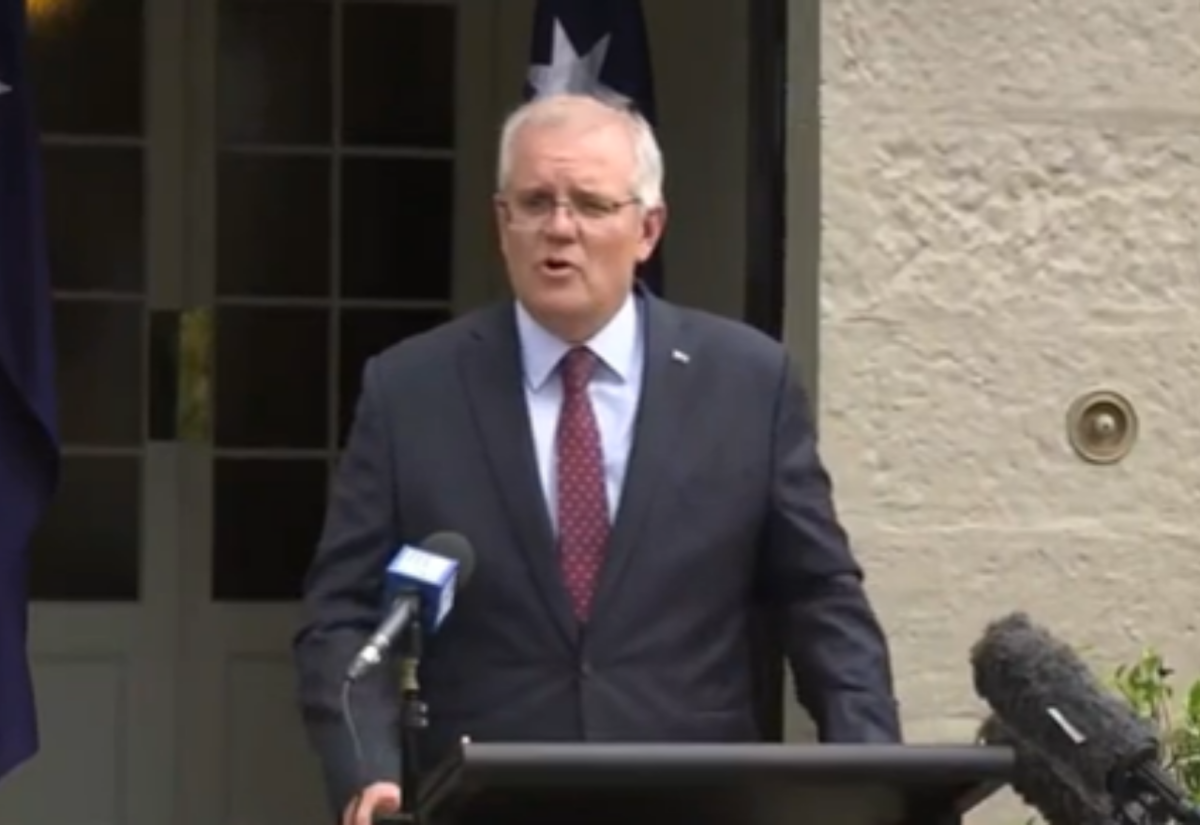New national approach means DIY covid testing, tracing, isolation
Lee O'Connor
30 December 2021, 9:20 PM
 Get your RATs ready for a DIY approach to covid management
Get your RATs ready for a DIY approach to covid managementThe new national approach to Test, Trace, Isolate and Quarantine (TTIQ) arrangements sees a major shift in how COVID-19 will be managed and monitored, with greater responsibility for self-management being handed to individuals and workplaces.
The new arrangements, including the National Cabinet's new definition of a 'close contact', were decided and announced yesterday by the Prime Minister and came into effect at 12:01am today, Friday 31 December.
As case numbers in Australia increase with the escalation of community transmission of the Omicron variant of COVID-19 the effectiveness of government's TTIQ systems has declined, creating delays and frustrations.
The Chief Medical Officer Professor Paul Kelly provided an update on the spread of the Omicron variant.
The case numbers continuing to increase in Australia and globally, Omicron continues to show greater infectivity than the Delta variant, but with less severity.
Professor Kelly noted that a recent study from South Africa have confirmed a 73 per cent reduction in severity of disease with Omicron compared with Delta.
In advising National Cabinet, the Australian Health Protection Principal Committee (AHPPC) say they are recommending a "pragmatic approach to TTIQ in a high case environment and the living with COVID policy approach."
Their statement, released yesterday, advises that "Public health efforts will be required to focus on highest risk and rely on individuals and workplaces to manage their own risk."
"Ongoing vaccination, particularly achieving high booster coverage, are key to keeping cases within manageable levels and therefore preventing health system overwhelm."
"A shift to greater use of RAT tests by individuals, industry and the community over PCR tests will also be required," the AHPPC statement said.
Close Contacts
National Cabinet agreed that close contacts will be defined as household or household-like contacts of a confirmed case.
Close contacts will be defined, except in exceptional circumstances, as those who usually live with or who have stayed in the same household for more than 4 hours as a case during their infectious period.
The concept of a 'casual contact', along with publicly-listed exposure sites, is now a thing of the past.
QR code check-ins are likely to continue at "higher risk exposure locations" as this allows rapid identification of high-risk transmission events and venues.
The AHPPC has also recommended ongoing use of QR code check-ins for locations where there is high risk of transmission to vulnerable individuals (such as hospitals and aged care facilities), large numbers of unvaccinated individuals, or settings where an outbreak would cause social and economic disruption, as in the case of critical industries where isolation of multiple positive individuals could lead to significant disruption of essential services.
We will need to wait for further information on QR code use from the state government.
Testing and Isolation for close contacts and COVID cases
National Cabinet agreed that:
- The isolation period for COVID-19 cases will be standardised regardless of vaccination status to a length of 7 days from the date of their positive test.
- Household contacts or household-like contacts, except in exceptional circumstances, must quarantine for 7 days after last exposure to a case regardless of vaccination status and then, subject to a negative Rapid Antigen Test (RAT) on day 6, monitor for symptoms for a further 7 days and repeat testing if symptoms occur.
- Other contacts who have been potentially exposed to a case but who are at lower risk of infection must monitor for symptoms and only need to have a RAT or PCR test if symptoms occur.
- All contacts should wear a mask when outside home, monitor symptoms and avoid visiting high risk settings for 14 days following exposure to reduce their risk of transmission to others.
- If RATs are positive, these should be followed by a PCR test to confirm the diagnosis, allow notification and to link individuals into social and medical support. PCR tests are the preferred test for symptomatic individuals.
The new close contact arrangements began today in the Australian Capital Territory, New South Wales, Victoria, Queensland and South Australia, however, South Australia will continue with a 10 day quarantine period for cases and close contacts.
Queensland and Tasmania are transitioning to RAT requirements prior to travel to those states.
PCR tests by health professionals will only be provided to those who are close contacts or symptomatic.
RATs for the rest
Despite the severe shortage in supply of Rapid Antigen Tests (RATs) in much of eastern Australia at present, today's changes are sure to send demand soaring.
Stronger supply agreements and smoother deliveries will need to be shored up soon to ensure that smaller and more remote communities, such as those in the Western Plains App area, are not left short in access to RATs.
"National Cabinet will work on arrangements to provide RAT tests to vulnerable cohorts such as remote Indigenous communities as well as in school settings and exceptional circumstances," Prime Minister Scott Morrison said.
"International arrivals will be able to undertake a RAT in Australia."
"In all other cases, RAT tests will be procured by individuals privately at their own cost – they will not be provided by Governments, thereby providing certainty to retailers, wholesalers and suppliers," he said.
"The Commonwealth, states and territories will work on concessional arrangements for low income and concession card holders for self-administered RATs."
Do-It-Yourself tracing, testing and quarantining
Outside the priorities set by public health for contact tracing, the AHPPC recommendations "supports empowering the community and industry to undertake self-managed contact tracing, testing and quarantine, where appropriate."
Embattled health and contact tracing staff will no longer be responsible for investigating the movements and tracking down the contacts of people who test positive.
Notifying someone when they have been around a positive case becomes the responsibility of the covid-positive person and their workplaces.
"Cases would notify their Household and other contacts identified as being at risk of significant transmission and advise them to follow relevant public health advice," the AHPPC said in their statement.
"Industry would similarly identify contacts and balance their management with workforce impact and business continuity."
As with every phase of the pandemic, clear communication of responsibilities and requirements to all Australians will be critical.
It is not yet clear whether covid-positive individuals will have any enforceable responsibility to notify their employers or people they've had extended contact with.
The new national agreement will see states scrambling to update their systems and information to the public over coming days.
National Cabinet is due to meet again on 5 January 2022.

